From the February 2021 issue of Apollo. Preview and subscribe here.
When Francis Haskell and Nicholas Penny’s Taste and the Antique was first published in 1981, Ernst Gombrich’s review of it for the London Review of Books opened with this laconic statement: ‘Here, at last, is a book of which we can sincerely say in the old phrase that it meets a long-felt want’. The same is true for Fabio Barry’s Painting in Stone, a tour de force of erudition and interpretation in the field of cultural history that will have a long-lasting legacy.
In an age of creeping commodification of the humanities and of academic hyper-specialisation, Barry’s book is a welcome arrival, clearly the synthesis of research conducted over the course of an entire career. The historical and geographical breadth of Painting in Stone is daunting, as it traces the use of marbles and other stones throughout Western and Middle Eastern architecture, from the ziggurats of Mesopotamia to the baroque chapels of southern Europe.
 The primary merit of this book is to offer to an English-speaking readership a vast overview of a subject that has been so far presented mostly in specialised academic publications, often in Italian or German. Previous comprehensive studies, such as Raniero Gnoli’s seminal Marmora Romana (1971), tended to focus on the materiality of the marbles, and specifically antique Roman coloured marbles, stressing their historical role as expression of conspicuous consumption and display of power.
The primary merit of this book is to offer to an English-speaking readership a vast overview of a subject that has been so far presented mostly in specialised academic publications, often in Italian or German. Previous comprehensive studies, such as Raniero Gnoli’s seminal Marmora Romana (1971), tended to focus on the materiality of the marbles, and specifically antique Roman coloured marbles, stressing their historical role as expression of conspicuous consumption and display of power.
Barry’s approach is much more ambitious, going beyond the social and political spheres to look at the symbolic values of marbles. They are treated primarily as media capable of evoking symbolically or metonymically the divine on earth, the metaphysical sphere becoming physical substance. For millennia, before the age of quantitative science, marbles – and the most colourful or glittering materials – were interpreted as the gleaming reflections of the heavens. They were infused with radiant power to transport the beholder from ‘the slime of the earth’ to the ‘higher world’, to quote Abbot Suger; and that idea, we are reminded, refers back to shared concepts as old as sedentary civilisation itself. The book ends just before the age of the Enlightenment, when the mystical aura of marbles began to fade when exposed to the cold light of ‘Reason’ and to the sharp analytical tools of nascent geology and chemistry.
Barry provides the reader with the eyes and the mindset of the pre-modern beholder, when the ‘Great Chain of Being’ linked all things in the universe, from God down to minerals, and connections were established mainly on the basis of physical and visual qualities. Barry embraces an immense range of material and literary sources; this book is as much a study of language as it is a history of architectural media. Although the author’s mastery of technical aspects is impressive, marbles and stones are read primarily through the evocative lenses of geological, cosmological and religious texts, and the even more imaginative prism of poetry. Thankfully Barry’s style inhabits the same linguistic spheres.
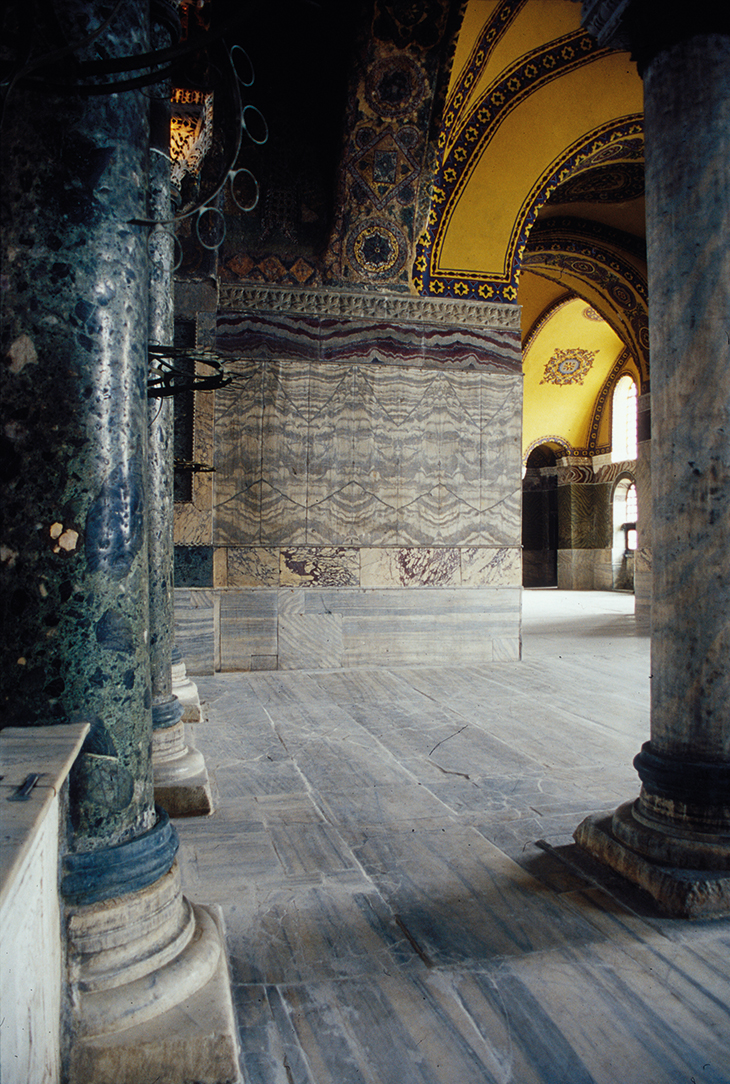
The North Gallery of Hagia Sophia, Istanbul, with ‘accordian’ style book-matched marble slabs on the far wall. Photo: Fabio Barry
New and illuminating meaning is found by examining the etymology of words and the rhetorical conventions used in the description of marbles. For example, it is revealing to discover that the Latin word for marble, marmor, comes from the Greek verb marmairein, meaning ‘to glisten’, whose Sanskrit root, mar-mar, indicates the lapping of waves. This relates to the Greek and Roman belief that marble was of essentially watery origin and was constantly ‘sweated out’ by mountains through their breaches. The presence of marine fossils further encouraged the belief that certain stones were ultimately petrified water. The same conception lies behind the cosmic watery floors of striped Proconnesian marble in Byzantine churches, such as Hagia Sophia or San Marco, which were meant to evoke the world’s watery genesis and the fact that God’s throne sat ‘above the waters’.
Barry’s multidisciplinary perspective on materials yields fresh insights into many aspects of Western architecture and art. We discover, for instance, that the familiar Judeo-Christian vision of a heaven made of precious stones and gems has its physical origins in the multicoloured ziggurats of Babylon. Or that fresco, a medium in which the pigments are in the wall, not on it, was devised by Minoan craftsmen precisely to imitate coloured stone. Equally revealing is to read that the bright white of Parian, Pentelic or Luna marble was possibly more important and dense with symbolic associations than the coloured pigments applied on many antique statues and buildings. We are also reminded that early Renaissance Venice had the upper hand over Florence or Rome in terms of ‘marble revival’. The reader finds intriguing new interpretations of specific key buildings, from the Erechtheion in Athens to the Porta Marina Domus in Ostia to Hagia Sophia in Istanbul – the star of the central part of the book – to Santa Maria dei Miracoli in Venice and Bernini’s Cornaro Chapel. Many similar examples dot the book’s pages.
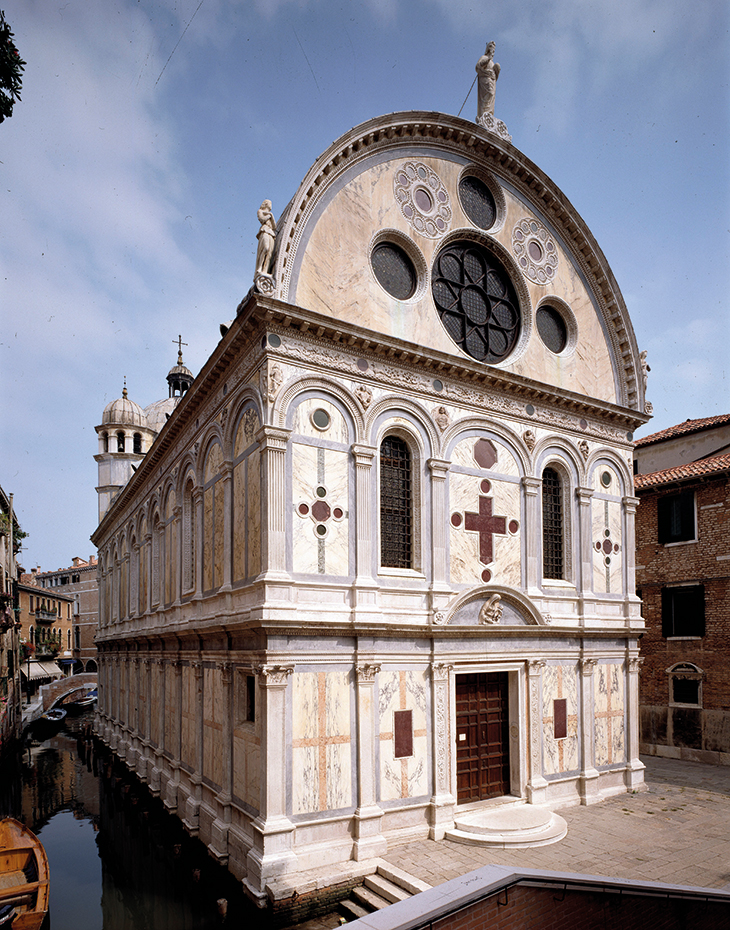
The facade of Santa Maria dei Miracoli, Venice, by Pietro Lombardo and others, built 1481–87 and clad in 10 varieties of marble. Photo: Fabio Barry
For a volume that on its dust jacket displays a tabernacle made of reused antique Roman coloured marbles and a Cosmatesque floor there is, however, surprisingly little mention of either. Often found in the latter, the porphyry roundels, or rotae porphyreticae, which constituted the most symbolically charged employment of the most symbolic of all stones, are discussed only once, for instance, and in relation not to a late antique building, but to the Renaissance chapel of the Cardinal of Portugal in the Florentine church of San Miniato al Monte. But no doubt those rich seams have been thoroughly mined by previous scholars; a book of this scope is necessarily bound to omit something.
The inattentive reader may well get lost in time, space and meaning in Painting in Stone, and in the book’s multiplicity of citations – there is perhaps too much in its pages. But this history of the ‘lithic imagination’ will certainly provide food for thought for a wide range of specialists for years to come, and will reframe the way in which we look at Western and Middle Eastern architecture and art.
Painting in Stone: Architecture and the Poetics of Marble from Antiquity to the Enlightenment by Fabio Barry is published by Yale University Press.
From the February 2021 issue of Apollo. Preview and subscribe here.
Unlimited access from just $16 every 3 months
Subscribe to get unlimited and exclusive access to the top art stories, interviews and exhibition reviews.

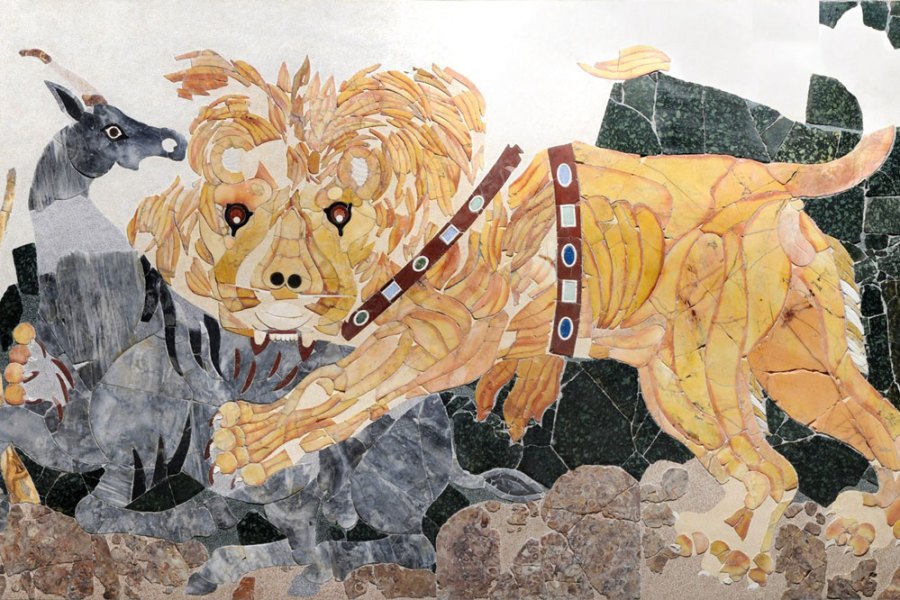
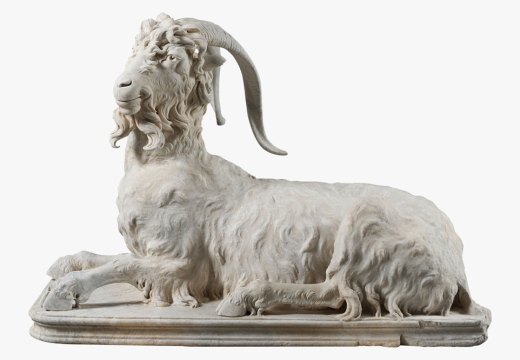
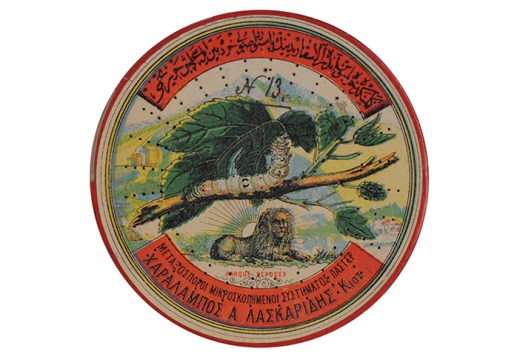










![Masterpiece [Re]discovery 2022. Photo: Ben Fisher Photography, courtesy of Masterpiece London](http://www.apollo-magazine.com/wp-content/uploads/2022/07/MPL2022_4263.jpg)
It’s time for the government of London to return to its rightful home